PURCHASES – EVALUATIONS
Our company offers the possibility to evaluate your collection for free and to sell it at the best price.

ESTIMATES AND PURCHASING INFORMATION
COINS PAPER COINS COLLECTABLE MEDALS
FAMOUS COLLECTIONS STAMPS COLLECTIBLES
- The assessments that take place at the company’s store (Aristidou 10-12) are carried out without an appointment, Monday to Saturday, 9:00 – 13:00 and are absolutely free.
- Accurate costing guaranteed by our more than 30 year expertise and experience in collectors’ items.
- The costing is conducted in connection with the prices of valid international catalogues,closing prices of our auctions , and other Auction Houses.
- Issue of genuinity certificates*
- Certification of rare coins and banknotes by the international companies NGC and PCGS *
- Cooperation with sworn evaluator on demand for tax or any other use *
- Three sales options (direct purchase from our physical store, via our online store and via auction).
- Possibility of an appraiser visiting your place.*
- Privacy Assurance.
- Absolutely legal procedures.
*For services with an asterisk there is a fee upon consultation.
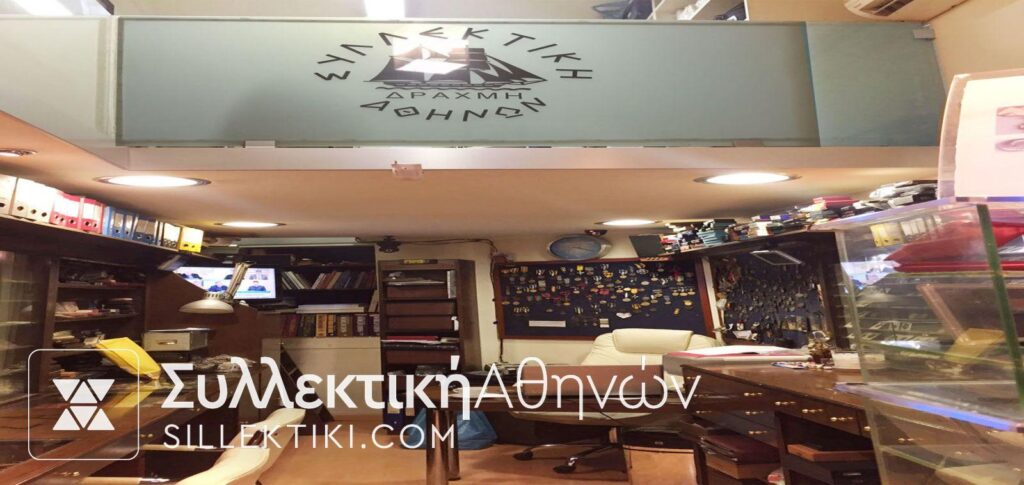
COIN SELLING FREQUENTLY ASKED QUESTIONS

- I have 100 Drachma coins with Alexander the Great. How much does it cost;
The 100 Drachma coins (featuring Alexander the Great on the obverse and the Star of Vergina on the reverse) of all dates have no collector value, with very few exceptions such as if they have a minter error or if they are in the full 1993 series which was issued by the Bank of Greece in a special collector’s case.

- I have 500 drachma coins with Olympic Games. How much does it cost;
The 500 Drachma coins (6 types) that were issued in 2000 on the occasion of the Olympic Games in our country, have no collector’s interest unless they are in Bank of Greece reels (UNCIRCULATED) where, however, their commercial value is close to their nominal .

- I have various coins from 1912 onwards. How much does it cost;
Second-hand coins from 1912 onwards that were probably kept for sentimental reasons are not a collection, but an accumulation of worthless trade change. In order for the above coins to be considered collectible, they must either be unhandled (UNCIRCULATED), or be special collector’s editions of the Bank, the so-called “Souvenirs”, most of which are in boxes with certificates.
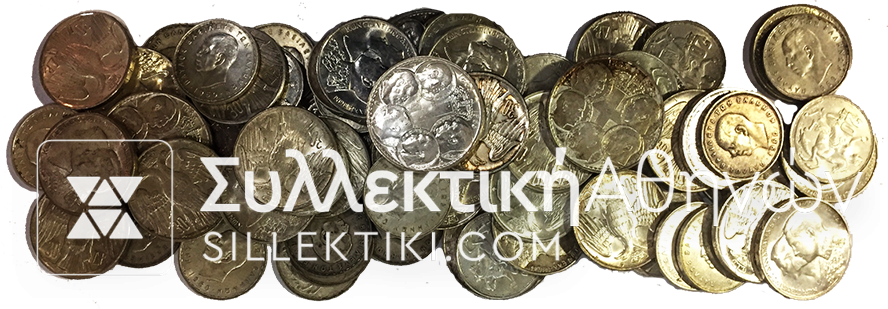
Exceptions to this coinage period are the 20 Drachma coins of 1960 and the 30 Drachma coins of 1963 and 1964. The particular ones, due to the fact that they contain silver, have a value which is calculated as follows:
Weight x purity x price per gram of silver
* The purity of the above is 835 degrees. (0,835)
The so-called “common” coins of this period are sold by the kilo and are used as raw material by artisans for handicrafts, tourist shops, etc.

- I have various foreign coins. How will I find out their price?
Coins from other countries are countless and there is no direction to price them yourself. And in them, as in Greek, there are “common” as well as collective ones. So it would be right for you to visit us so we can evaluate them.

- I have old coins from before 1900. How will I know their value?
In this case you should visit us to make an estimate. In case you are not a resident of Athens, you can send us some photos, through which we cannot do an exact pricing, but we will let you know if it is worth going further or not.

- Why do I see coins similar to mine online at different prices?
First of all, you should be sure of the reliability of the page you visited (if it is a serious site, if it is a valid currency price list and not private ads, etc.). Besides, the prices of a coin are determined by many factors such as condition, rarity, type, variety, special editions, etc. For example a 1959 2 Drach coin if used is worth a few cents, while if it is uncirculated (UNC) its price can reach 300 euros.
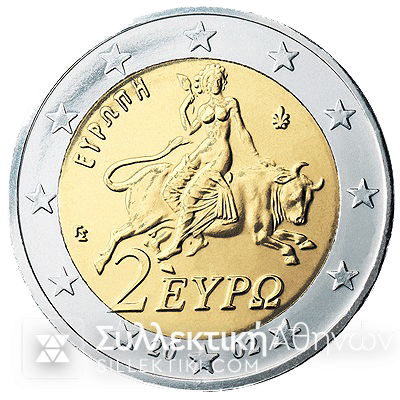
WHAT REALLY APPLIES TO THE 2002 RARE DIVERSA WITH AN “S”
Recently, there has been an upsurge in the search for a rare 2 Euro 2002 Greek coin.
Misinterpretations, fictions and anecdotal pseudo-news flood the internet and beyond.
You are posting the 2002 euro on various auction sites at prices that are not just higher but ridiculous.
But what is the truth about the 2002 two-doors with the S engraved on a star?
In 2002 Greece ordered Finland to “cut” 70,000,000 two euros coins.
The mint of Finland, like most mints, has a characteristic symbol, or letter, that they engrave on the coins, the so-called “mintmark” or internationally “mintmark”.
Finland has the S (from Suomi) which is on one of the stars on all the two euro coins it makes.
Given that 70 million Euros were minted in our country, it stands to reason that there is no scarcity when it comes to the “S” coin.
But why does this frenzy exist?
Finland, due to the backlog of orders it had, somewhat hastily built many biships which had some manufacturing errors.
There are various manufacturing errors, from very small, e.g. “the earring” as the fellow collectors call it (which is a bump on the cheek of the bull), the “tattoo”, the “bikini” and other small errors that cost around 50 euros, up to very obvious errors like “spill metal’, ‘wrong disc’, ‘duplicated’ and more.
One such glaring error on a truly rare bienno (in which the mintage is unknown since you include the 70 million) was sold at an auction in Germany for around €1,000.
Then a similar one appeared on Ebay, or the same one, with a suggested selling price of 80,000 euros!
Here we should make it clear that Ebay or other buying and selling sites are not price lists, nor, of course, do they have any substance in terms of prices that anyone can propose without any restrictions on anything.
It is therefore very easy for someone to upload to Ebay for sale e.g. a simple transaction coin of two Euros and “asking” for a million!
Of course this makes no sense.
After the specific posting on Ebay, the specific incident spread quickly and thus in combination with the justified ignorance but also the hope of some for an extra income from one and “click fishing” (to achieve a lot of traffic) some low-level websites from the other, done “viral” a “mistake” !

- How can I be sure that someone’s assessment of my collection will be correct?
The most important thing here is the reliability and specialized knowledge that the appraiser has both in grading (assessing the condition and rarity of the coin) but also his commercial experience in the field for the correct pricing.
BANK SELLING FREQUENTLY ASKED QUESTIONS

- I have old drachma notes that I didn’t have time to exchange at the Bank. Do they have any value?
To be considered collectible, drachma banknotes that were in circulation before the use of the euro must be uncirculated (collared from bundles or entire bundles).

- I have various old Greek banknotes. How much does it cost;
The right thing to do is to visit us and let us evaluate them, because many parameters must be checked that will characterize them as collectibles or not.
In general, Greek banknotes from 1926 to 1944 are of low value, without this being a rule, because even here there are exceptions such as various special editions (specimen, errors, extraordinary editions and other peculiarities).
The Greek banknotes that are definitely of interest are from 1923 and before, but also the banknotes from the period 1945 to 1956.
And in banknotes, as in coins, the value is determined by many components, the main ones of which are their condition and rarity.

- Why do I see banknotes similar to my own at completely different prices on the Internet?
First of all, you should be sure of the reliability of the page you visited (if it is a serious site, if it is a valid price list of banknotes and not private ads, etc.). Besides, the prices of a banknote are determined by many factors such as condition, rarity, type, variety, special editions, etc.
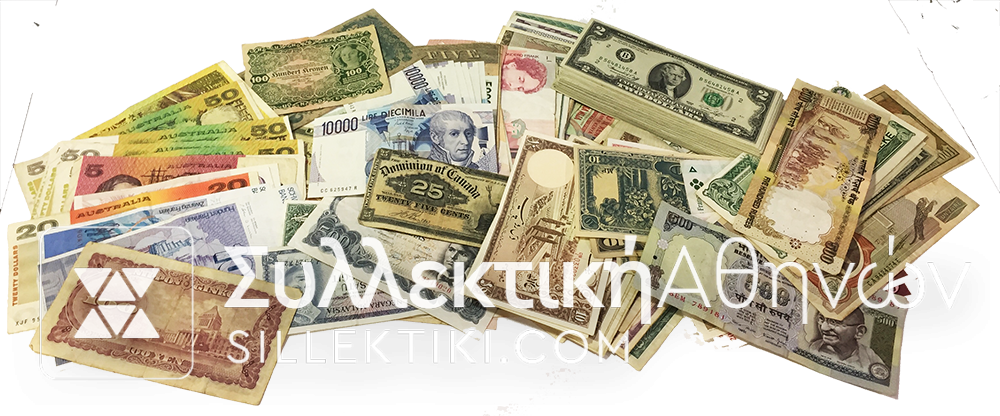
- I have foreign old notes. Do you buy them? and how much do they cost?
As with Greek banknotes, so also with the banknotes of other countries there are collectors and non-collectors. There is no way to properly price them yourself if you have no knowledge of the item. You should visit us to make an assessment.

- How can I be sure that someone’s assessment of my collection will be correct?
The most important thing here is the reliability and specialized knowledge of the appraiser both in grading (assessing the condition and rarity of the banknote) but also his commercial experience in the field for the correct pricing.
FREQUENTLY ASKED QUESTIONS ABOUT THE SALE OF STAMPS

- I found old stamps sealed. Are they valuable?
Stamps that are variously detached from mail envelopes are usually worthless. They are the so-called “common” stamps and are sold at a unit price of a few cents of the Euro. Of course, there are also the collections of stamped stamps that have commercial value, but the series should be complete by issue, in good condition and as far as the Greek ones from 1933 and before are concerned.
All stamps have collector value, in the broadest sense of the term, because all collections, regardless of whether they cost a little or a lot, have great value for all that they offer (knowledge, relaxation, emotional value, souvenir, etc.).
- I have stamped Greek series and mail envelopes. How much they cost?
In general, Greek unsealed stamps and first day envelopes are of interest from 1960 and before, with few exceptions. From 1960 onwards, there are large quantities “stored” either by collectors or dealers, with the result that their prices are quite low. Unsealed pre-1960 stamps are priced on the basis of stamp price lists which exist in various editions and are easily obtainable.
Worthy of discussion, but also unclear, is the fact that the prices mentioned in the stamp catalogs are many times the commercial prices and in fact the commercial prices differ in percentage depending on the years! For example a 1970s series that has a list price of e.g. 10 euros, is sold at about 10%-15% i.e. 1-2 euros, while a series from the 1950s that has the same price of 10 euros, is sold at 30-50% i.e. 3-5 euros (!). In any case if you have a collection of unsealed series it would be advisable to visit us.
- I have various foreign stamps. Are they valuable?
And on the stamps of other countries there are collectibles and non-collectibles. The unsealed ones are basically collectible, in complete series per edition. There are no general pricing guidelines. It would be nice if you visit us.
- How can I be sure that someone’s assessment of my collection will be correct?
The most important thing here is the reliability and specialized knowledge of the appraiser as well as his commercial experience in the field for the correct pricing.
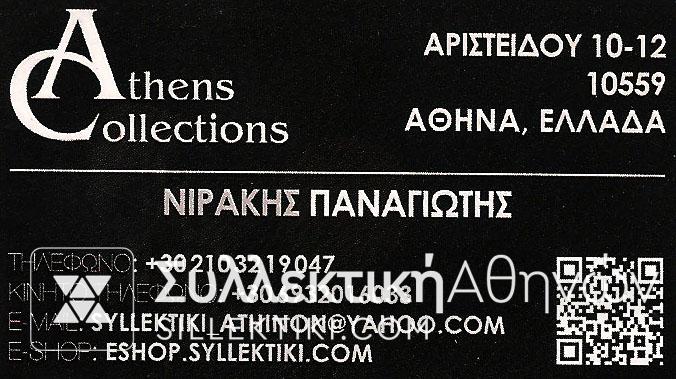
COMPANY
ELECTRONIC STORE
SUPPORT
Copyright 2025© Συλλεκτική Αθηνών. All rights reserved. Created by CLC Web Soluctions.